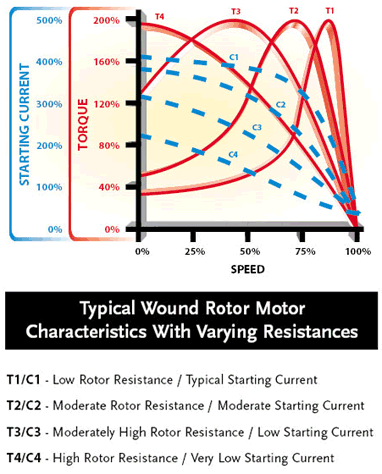Wound Rotor
Wound rotor motors are an extremely versatile breed of induction motors. Featuring a rugged design, these machines provide the unique ability to gradually bring up to speed high-inertia equipment and large loads smoothly and easily. Wound rotor motors also can develop high starting torque at standstill – while maintaining low inrush. Long motor life is ensured with the use of external resistor banks or liquid rheostats that dissipate heat build-up generated during motor start-up.
- Available from 100 hp up to 10,000 hp
- Brushes selected that provide high performance under varying load conditions
- High-grade steel shaft material
- Continuously rated sliprings & brushgear
- Brush lifting & short circuiting device available
- Designed for high-starting torque with low inrush current
- Don’t forget to ask us to supply you with a Liquid Rheostat on a six step Resistor Bank with your Wound Rotor order!
Applications
- Ball Mills
- Shredders
- Cement Mills
- Pumps – get varied speed

How Wound Rotor Motors Work
What makes the wound rotor motor a unique induction machine is its rotor. Instead of a series of rotor bars, a set of insulated rotor coils is used to accept external impedances. The rotor windings are similar to those found on a DC armature, with the coils connected together to a set of rings that make contact with carbon-composite brushes. The circuit is completed by connecting the brushes to a set of impedances such as a resistor bank or liquid rheostat. This rotor construction design allows for a varying resistance from almost short-circuit condition to an open-circuit condition with infinite external resistance. By modifying the resistance, the speed-torque characteristics can be altered. This allows for the torque to remain high, the inrush low, and the speed varied.